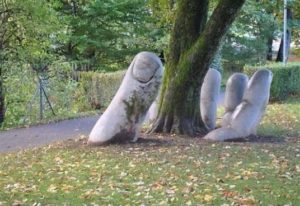 Myotherapy is muscle and tendon manipulation that can align the body, restore movement and resolve pain! And more…
Myotherapy is muscle and tendon manipulation that can align the body, restore movement and resolve pain! And more…Myotherapy is a treat.
Treatment is often performed through clothing or material and at times other techniques are used such as dry needling, stretching, postural education and rehabilitative exercise. Note that the lists below are not exhaustive but give common examples.
Myotherapy can change joint and bone function
Just because Myotherapy manipulates muscle and tendon does not mean that Myotherapy only treats muscle pain. On the contrary, skilled manipulation of the soft tissues has the ability to align the spine and restore movement to joints. In fact much of the pain that Myotherapy deals with would not be considered muscle pain at all, like:
Myotherapy is great at solving long standing pain
A Myotherapist is an expert in myofascial pain. This type of pain is underneath many long standing unresolved pain symptoms such as:
- Headaches
- Migraines
-
Jaw and tooth pain (TMJ)
- Tennis Elbow
- Golfer’s Elbow
- Ear pain
- Buttocks pain
- Hip pain
- Knee pain
- Heel pain
- Shin splints
- Chest pain
- Plantar fascia pain
- Achilles tendinitis (tendinopathy)
- Growing pains
… unrelenting or reoccurring pain, just about anywhere in the body may respond to Myotherapy.
Nerve symptoms
- Sciatica
- Carpal Tunnel Syndrome
- Numbness
- Tingling
- Weakness
- Burning
- Cold
- Thoracic outlet syndrome
- Restless leg syndrome
Fluid movement
Manipulating the muscle and fascia can have an amazing effect on fluid movement. Treatment often solves:
- Chronic swelling in the lower legs
- Symptoms caused by fluid retention in pregnancy
- Chronic swelling in ankles following an ankle injury
Weakness
Weakness is a common symptom linked to other conditions. Many of these cases can be remedied.
- Ankle – Often ankles harbour ongoing weakness following a sprain. Read more here.
- Knee – Muscles around the knee can cause it to collapse or give way. This is easily remedied.
- Grip – Conditions such as tennis elbow or carpal tunnel syndrome can seriously affect grip strength.
Sensory dysfunction
Many conditions have accompanying sensory disturbances. For example migraines are often accompanied by nausea and blurred vision. Yet I have successfully treated many cases of nausea and blurred vision when the patient had no history of migraines.
- Dizziness/loss of balance
- Blurred vision
Internal dysfunction
The symptoms listed below are conditions that I have had consistent success with. To be honest, I have found success with these conditions through personal study following my Myotherapy course. Nonetheless, the results come from skilful manipulation of muscle and tendon so it is right in line with a Myotherapist’s skill set. Do not expect that every Myotherapist will treat these conditions.
- Nausea
- Morning sickness
- Colic in infants
- Diarrhoea
- Difficulty swallowing
- Sinusitis
- Dry persistent cough
- Dysmenorrhea (period pain, abdominal cramping)
- Infertility
- Tinnitus
- Heart arrhythmia
- Reflux
Solving long term pain . . .
The hallmark of Myotherapy is the ability to get to the bottom of reoccurring or unresolved pain. The secret to resolving long standing pain is in the ability to figure out faulty movement patterns or subtle postural changes that the body has adopted. When posture and movement are improved, lasting relief can be achieved.
For ‘What is Myotherapy?’ in a little more detail check out the article, ‘How does Myotherapy really work?’
Share this article with others that need some good news!
– Tim


